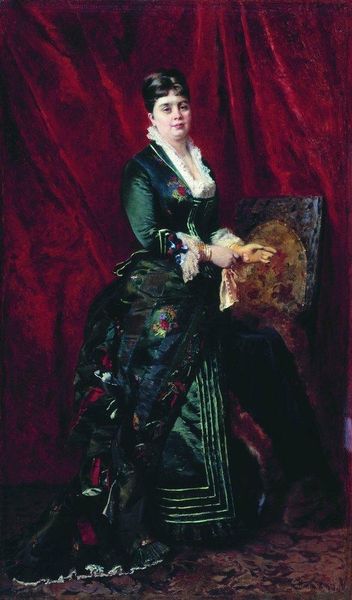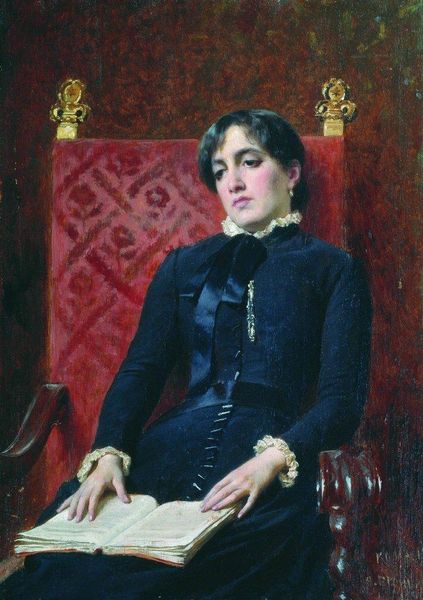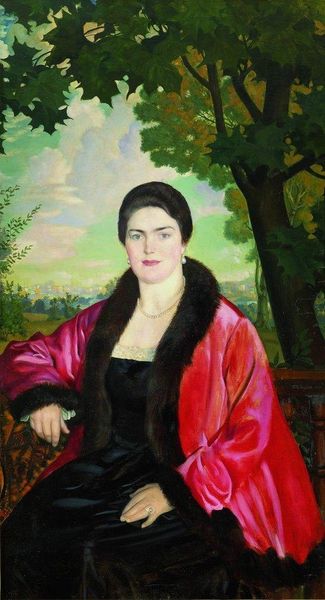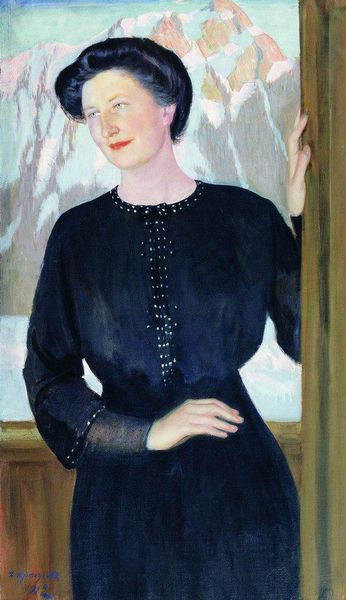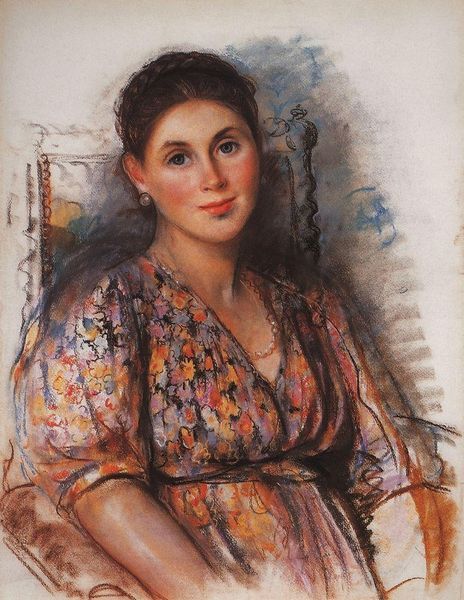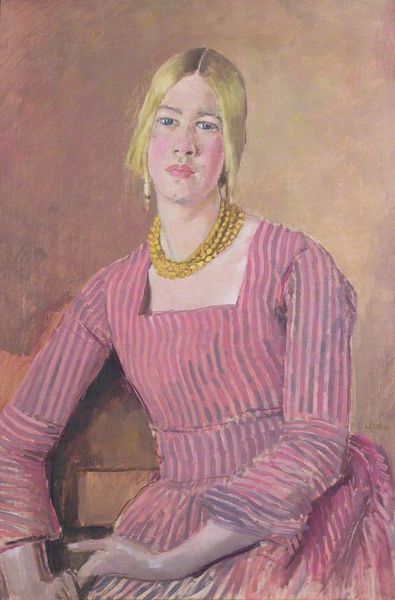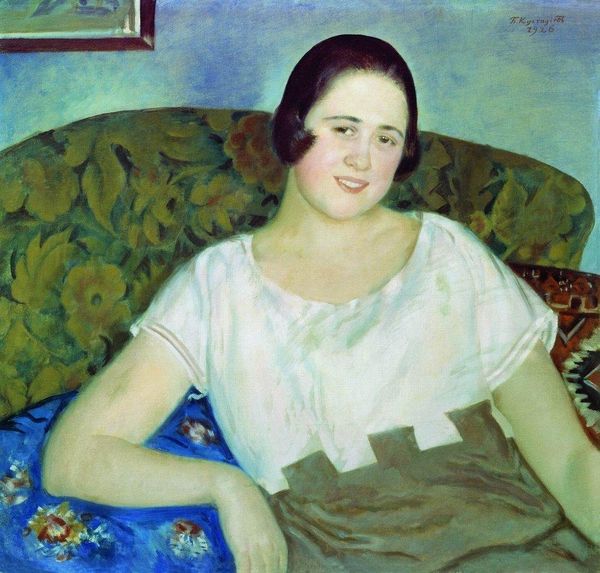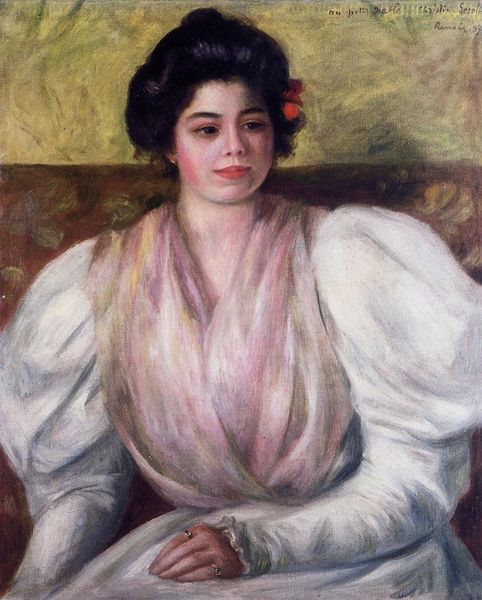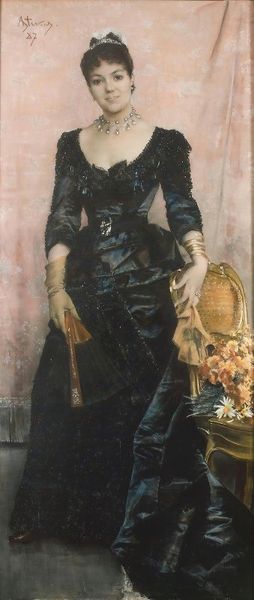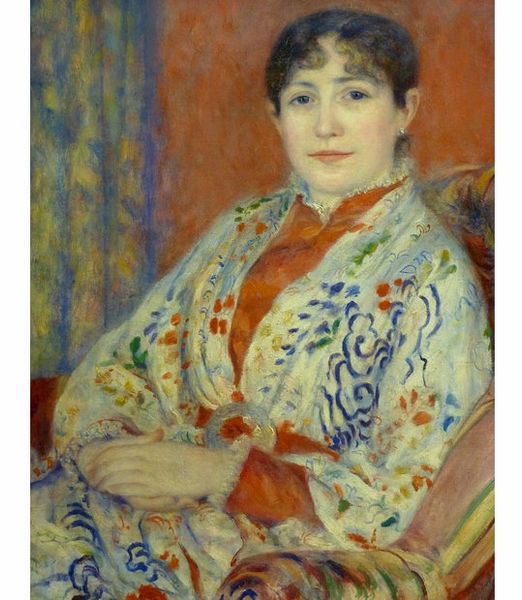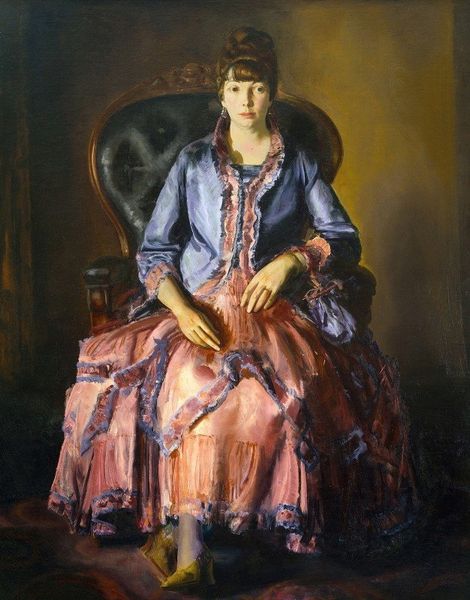
Copyright: Public domain
Editor: This is Boris Kustodiev's "Portrait of Lyubov Borgman" from 1915, rendered in oil paint. I'm immediately drawn to the sitter's composed demeanor against the vibrantly patterned backdrop. How do you interpret this work? Curator: Considering the historical context is crucial here. Painted on the cusp of immense social upheaval in Russia, this portrait speaks to the constraints and expectations placed upon women of a certain class. Borgman's attire and accessories suggest a life of privilege, but her slightly melancholic expression hints at a potential dissatisfaction with these constraints. Editor: That's fascinating! I hadn’t considered the social context impacting the individual. Does the backdrop contribute to this reading? Curator: Absolutely. The vibrant colors and bold patterns could represent the tumultuous changes brewing in society. Notice how the sitter is almost enveloped by the textiles, which can be interpreted as symbolic of being trapped or overshadowed by societal expectations. The work evokes what contemporary theorists often explore: the tension between individual agency and societal forces. Editor: So it’s not just a pretty portrait, but a commentary on the female experience during a pivotal time? Curator: Precisely. Kustodiev utilizes portraiture, a genre often associated with status and idealization, to subtly critique the limitations placed on women, inviting viewers to contemplate identity, gender, and societal norms. What does this new understanding reveal for you? Editor: It really makes you think about the power dynamics at play, beyond just the surface. Curator: Indeed. By exploring the painting’s cultural and historical layers, we unearth a narrative that resonates even today, highlighting the enduring struggle for gender equality and self-expression.
Comments
No comments
Be the first to comment and join the conversation on the ultimate creative platform.
